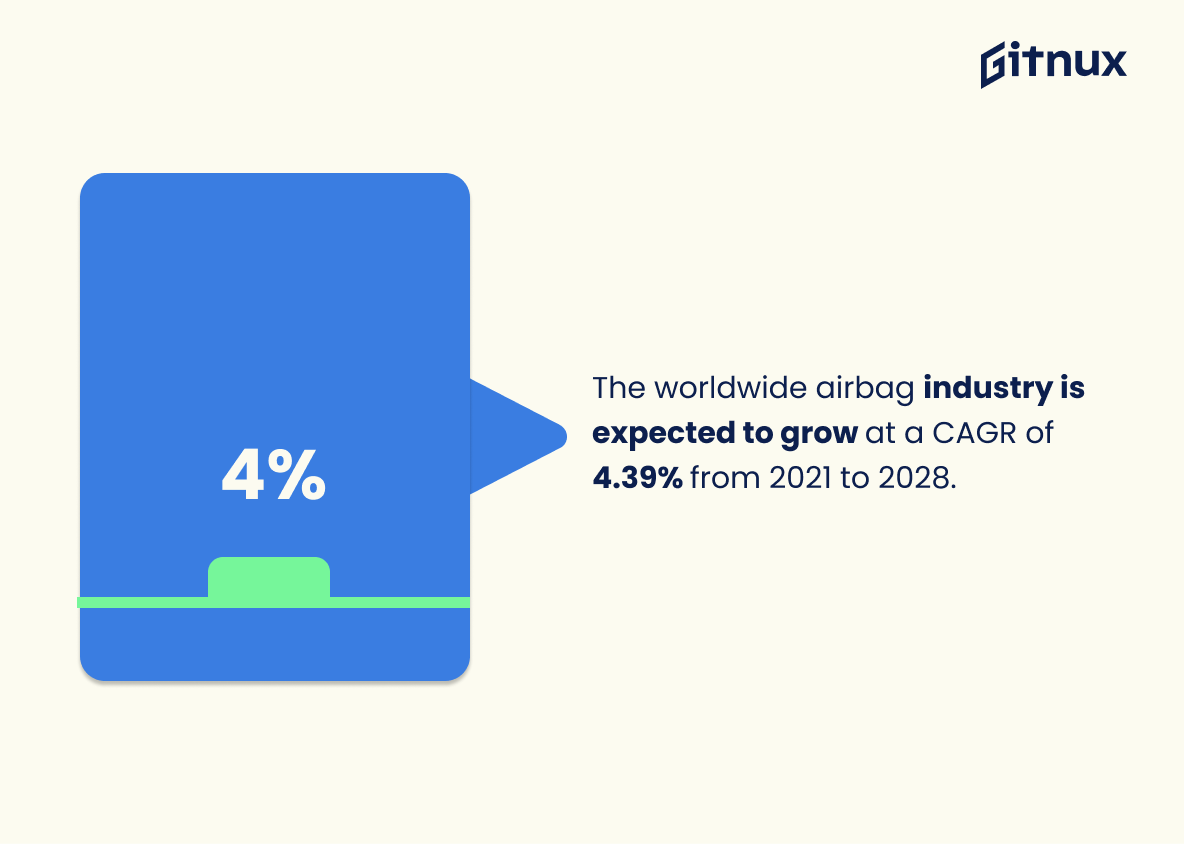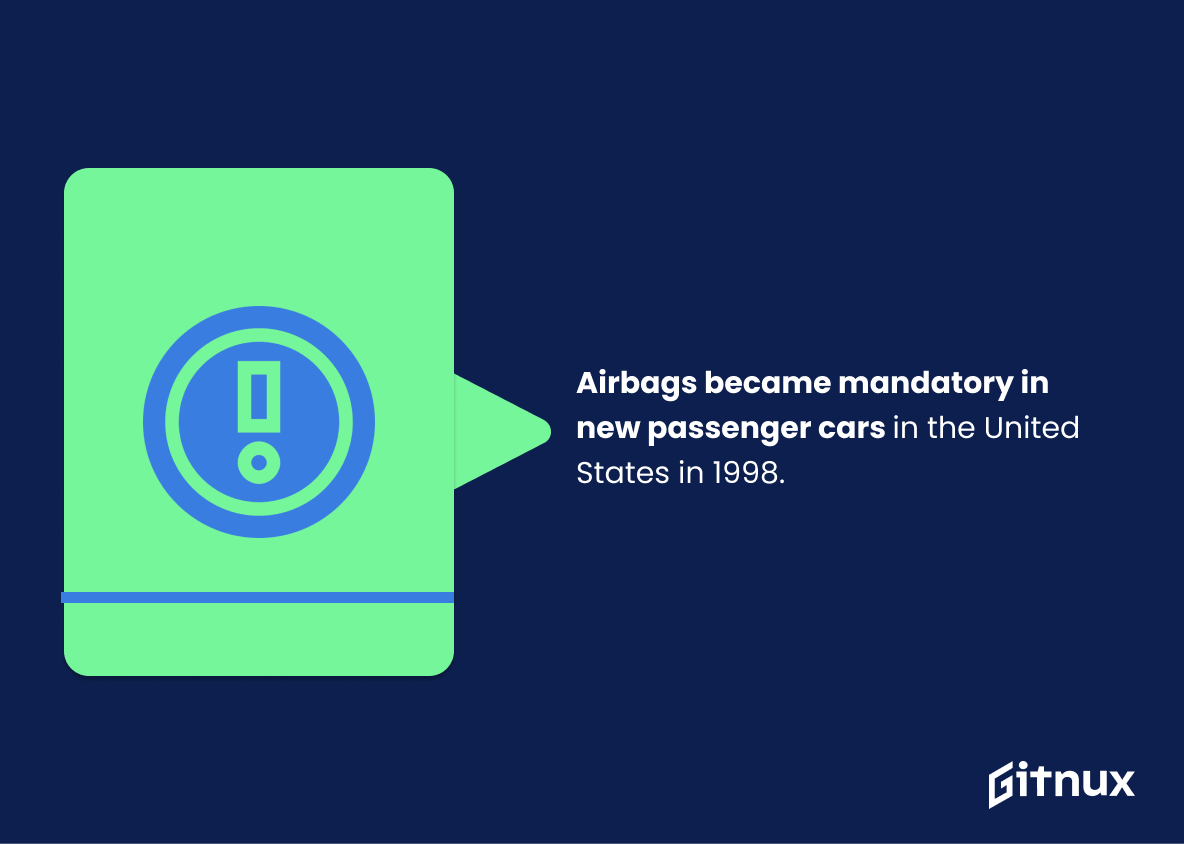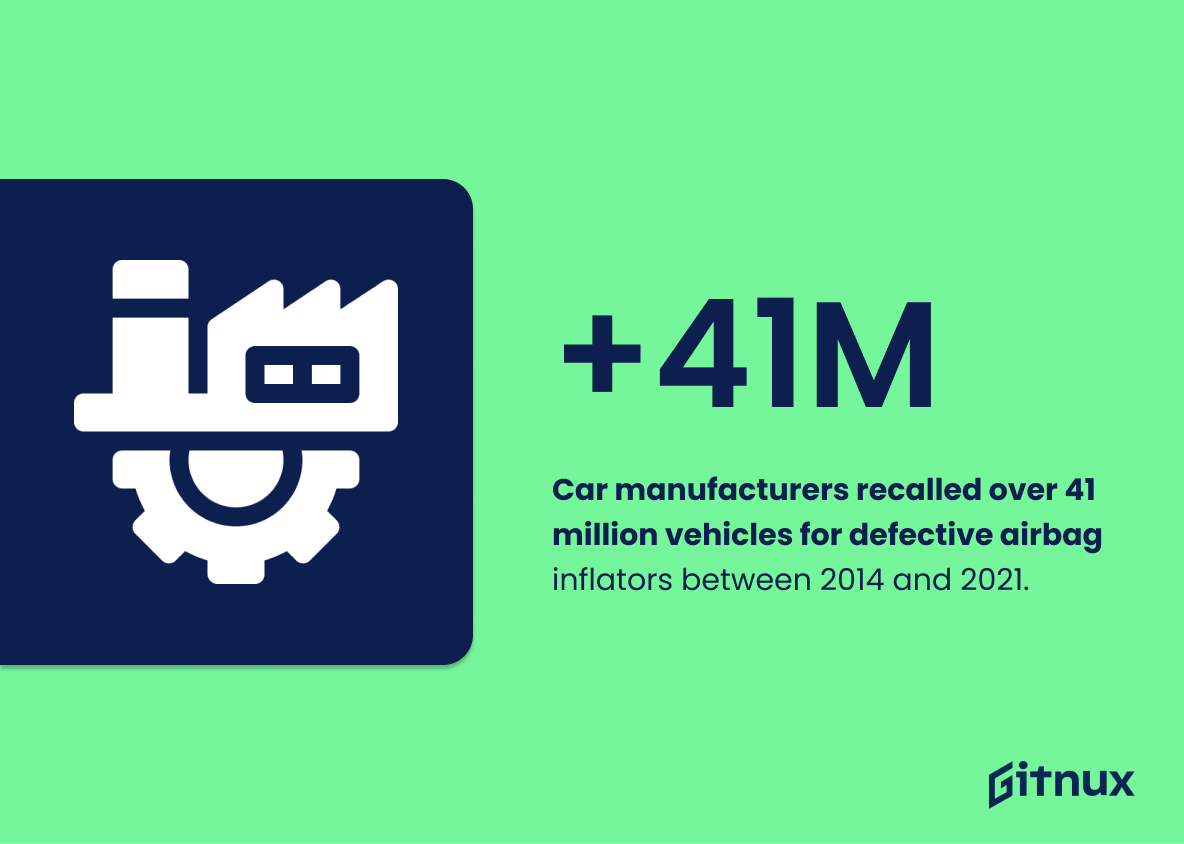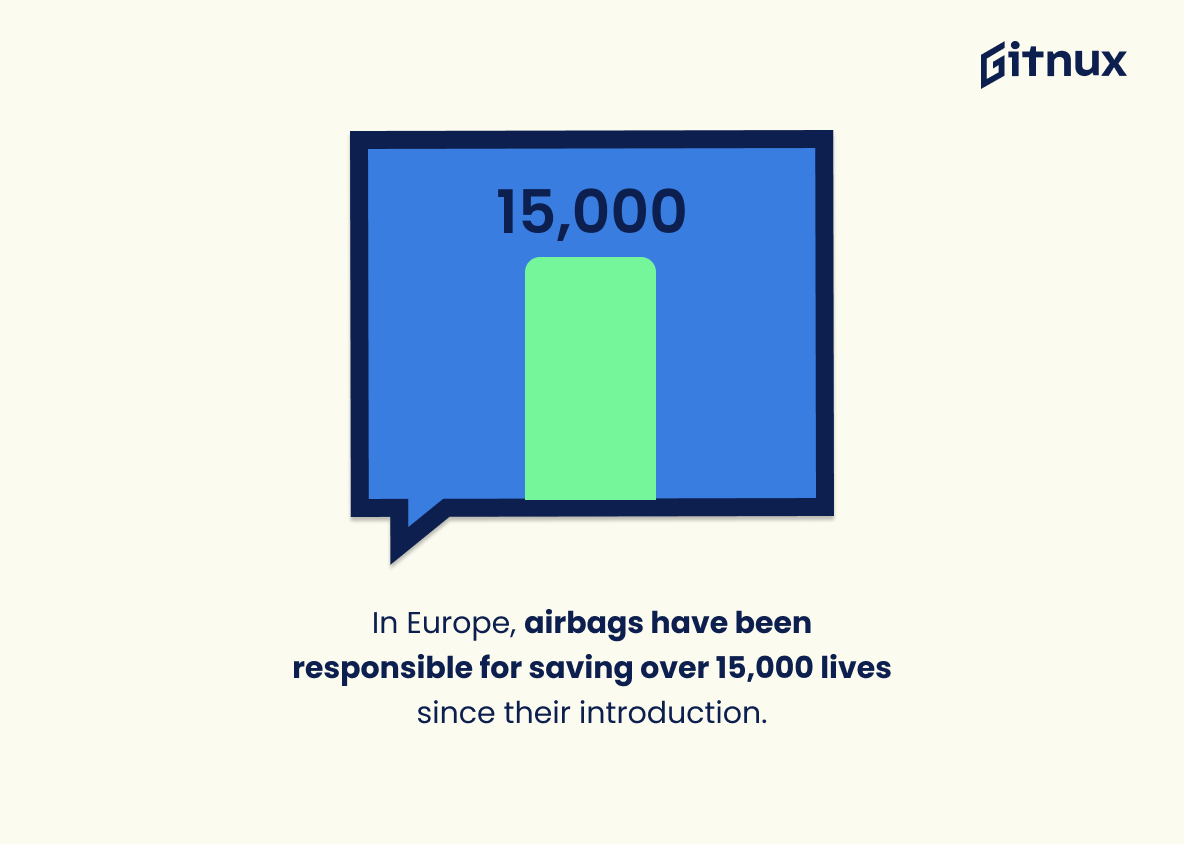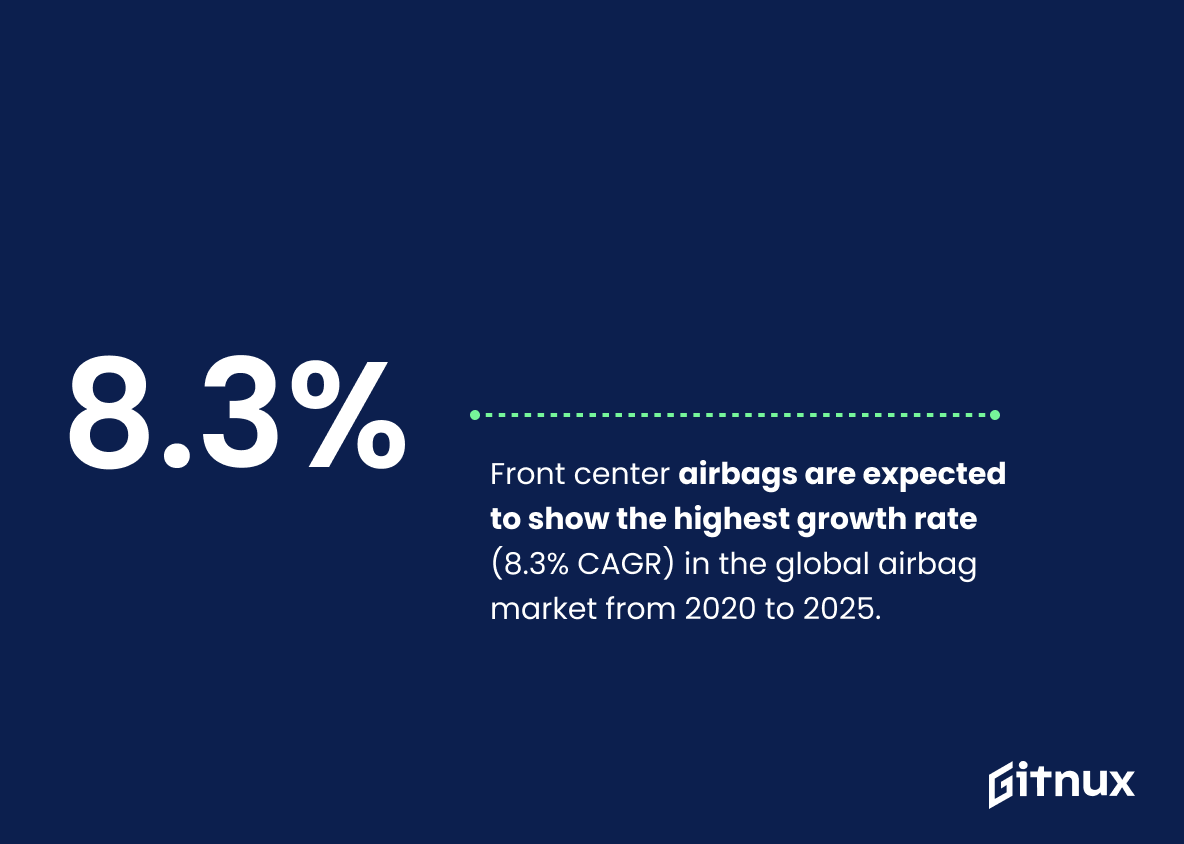Airbags have been a crucial safety feature in cars since their introduction over four decades ago. Since then, they have saved countless lives and continue to be an important part of vehicle safety today. This blog post will explore the statistics behind airbag technology, from its history to current trends in usage and production around the world. We’ll look at how airbags reduce fatalities for drivers in frontal crashes, as well as other facts about side airbags, counterfeit units on the road today, recalls due to defective inflators, and more. By understanding these numbers better we can gain insight into why this life-saving technology is so important – both now and going forward into the future.
Airbag Statistics Overview
In 1995, only 12% of all cars in the United States had a passenger airbag.
This statistic serves as a stark reminder of how far airbag technology has come in the past two decades. It highlights the importance of airbags in providing safety for passengers in the event of a crash, and how far the automotive industry has come in terms of safety features.
82% of Europeans claimed to trust the safety features of airbags in 2019.
This statistic is a testament to the confidence Europeans have in airbags as a safety feature. It shows that the majority of Europeans believe airbags are reliable and effective in protecting them in the event of a car accident. This is an important statistic to consider when discussing airbag safety, as it demonstrates the trust that Europeans have in the technology.
The global automotive airbag market size was valued at USD 18.54 billion in 2020.
This statistic is a testament to the importance of airbags in the automotive industry. It shows that the market for airbags is growing, indicating that more and more people are recognizing the safety benefits of airbags and investing in them. This statistic is a powerful reminder of the importance of airbags and the need to continue to invest in their development and use.
The worldwide airbag industry is expected to grow at a CAGR of 4.39% from 2021 to 2028.
This statistic is a crucial indicator of the future of the airbag industry, providing insight into the potential for growth and expansion. It is an essential piece of information for anyone looking to invest in the airbag industry, as it gives an indication of the potential returns that could be expected over the next seven years. Furthermore, it is a valuable resource for those writing a blog post about airbag statistics, as it provides a reliable and up-to-date figure that can be used to inform readers about the industry’s prospects.
In 2019, Asia-Pacific had the highest automotive airbag growth rate, expected to continue till 2025.
This statistic is a clear indication that the Asia-Pacific region is leading the way in automotive airbag growth, and is likely to remain at the forefront of this technology for the foreseeable future. This is an important point to consider when discussing airbag statistics, as it highlights the importance of the Asia-Pacific region in the development and implementation of airbag technology.
Over 277 million airbag units were produced in 2019 globally.
This statistic is a testament to the sheer magnitude of airbag production in 2019, highlighting the importance of airbags in the automotive industry. It is a clear indication that airbags are a vital safety feature in vehicles, and that manufacturers are taking the necessary steps to ensure that their vehicles are equipped with the latest airbag technology. This statistic is a powerful reminder of the importance of airbags in keeping drivers and passengers safe.
The United States reported 146 airbag related fatalities from 1990 to 2008.
This statistic serves as a stark reminder of the potential danger of airbags, highlighting the fact that even though airbags are designed to protect drivers and passengers, they can still cause fatalities. It is a sobering reminder of the importance of taking all necessary precautions when using airbags, and of the need for further research into airbag safety.
About 90% of new cars worldwide have airbags, either as a standard or optional feature.
This statistic is a testament to the importance of airbags in modern vehicles. It shows that the vast majority of car manufacturers recognize the value of airbags and are making them available to their customers. This is a clear indication that airbags are an essential safety feature and should be taken seriously when considering the safety of a vehicle.
Airbags became mandatory in new passenger cars in the United States in 1998.
This statistic is a powerful reminder of the importance of airbags in protecting passengers in the event of a crash. It highlights the fact that, since 1998, airbags have been a mandatory safety feature in new cars in the United States, and that this has undoubtedly saved countless lives. It serves as a reminder of the importance of airbags in keeping us safe on the roads.
In 2021, there are about 3 million counterfeit airbags in operation.
This statistic is a stark reminder of the prevalence of counterfeit airbags in circulation. It serves as a warning to drivers that they should be aware of the potential danger of these fake airbags and take the necessary steps to ensure their safety. It also highlights the need for increased regulation and enforcement of airbag standards to protect consumers from these potentially deadly products.
Car manufacturers recalled over 41 million vehicles for defective airbag inflators between 2014 and 2021.
This statistic is a stark reminder of the sheer magnitude of the airbag inflator defect crisis that has plagued the automotive industry over the past seven years. It serves as a testament to the importance of vehicle safety and the need for manufacturers to take proactive steps to ensure the safety of their customers.
In Europe, airbags have been responsible for saving over 15,000 lives since their introduction.
This statistic is a powerful testament to the life-saving capabilities of airbags. It serves as a reminder of the immense value of airbags in protecting drivers and passengers from serious injury or death in the event of a crash. It is a powerful reminder of the importance of airbags in keeping us safe on the roads.
Front center airbags are expected to show the highest growth rate (8.3% CAGR) in the global airbag market from 2020 to 2025.
This statistic is a clear indication that front center airbags are becoming increasingly popular in the global airbag market. This is likely due to the fact that they provide an extra layer of protection for drivers and passengers in the event of a collision. As such, this statistic is a testament to the growing importance of airbags in the automotive industry, and serves as a reminder of the need for drivers to stay safe on the roads.
Conclusion
Airbags have been a major contributor to the safety of drivers and passengers in cars since their introduction. The statistics presented show that airbag technology has come a long way, with an increase in both availability and trust from consumers over time. Airbags are now standard features on most vehicles worldwide, providing life-saving protection for occupants during collisions. Despite this progress, there is still room for improvement as counterfeit airbags remain prevalent and recalls due to defective inflators continue to occur. As automotive manufacturers strive towards safer roads through improved vehicle design and advanced technologies such as airbags, it is clear that these lifesaving devices will play an important role in reducing fatalities caused by car accidents around the world.
References
0. – https://www.elitetechgroup.com
1. – https://www.grandviewresearch.com
2. – https://www.cargurus.com
3. – https://www.mordorintelligence.com
4. – https://www.reportlinker.com
5. – https://www.reportsanddata.com
6. – https://www.autoblog.com
7. – https://www.statista.com
8. – https://www.industryarc.com
9. – https://www.crashstats.nhtsa.dot.gov
10. – https://www.nhtsa.gov
11. – https://www.avsvehicles.com
12. – https://www.iihs.org
13. – https://www.ncbi.nlm.nih.gov



